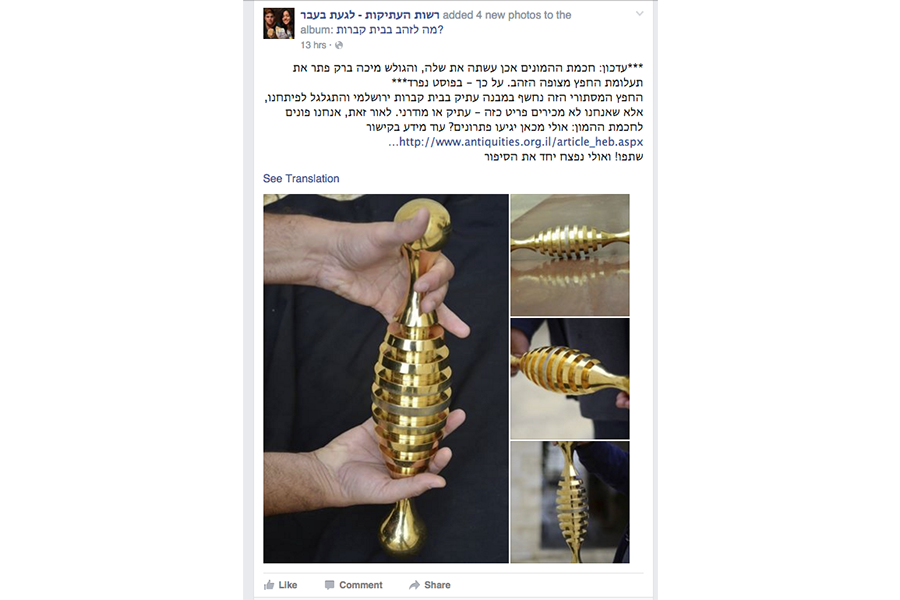Stumped archeologists ask Facebook for help to identify a mysterious object
Loading...
After six months of trying – and failing – to determine the identity of an object that resembles a gilded rolling pin, experts at the Israel Antiquities Authority decided on Tuesday morning to hand the task over to “the wisdom of the masses” on Facebook.
Within hours and after hundreds of contributions, “the intelligence of the masses has done its work,” the authority reported on Facebook. “It has solved the puzzle of the gold-covered object.”
And no, it isn’t a foot massager, a currency maker, a huge honey dipper, or a meat tenderizer, as some Facebook users have guessed.
The object, identified by an Italian man named Micah Barak, is an energy equalizer meant to be used by naturopaths and healers. It’s called an “Isis Beamer,” according to a German company that sells it, named after the Egyptian goddess of medicine, magic, and nature, and it “can create a protective field of the type generated by spirit energies or meditation.”
A maintenance worker first found the 19-pound mysterious object in a building of an unidentified Jerusalem cemetery that serves as an important archaeological site. The site has turned up remains from Roman, Byzantine, and Crusader periods, NBC News reports.
The maintenance worker worried that he might have stumbled on an explosive, though, so he called in a bomb squad that detonated a controlled explosion that, somehow, didn’t damage the energy beamer.
Once it was deemed safe, police gave the object to the authority's robbery prevention unit.
According to NBC, the head of the unit, Amir Ganor, joked that when he saw it, he thought "that aliens landed from outer space and brought the object."
For the past six months, Mr. Ganor and his team have been trying to figure out what it is. They learned from a jeweler that the object is coated in 24-carat gold, and from an X-ray, that it is solid metal. Yet, the unit still could not determine the true identity of the rolling pin until today.
In its morning Facebook plea for help, the group wrote that the strange object has “found its way to our doorstep, except, we are not familiar with such a thing. Is it ancient or modern?”
But now that the Beamer mystery has been solved, a new one has emerged: Why was the healing pin buried in the cemetery in the first place?
"We hope that those responsible for hiding the object in the cemetery will contact us and inform us why it was buried in an ancient structure and to whom of the dead they wished to give positive energy," said Ganor to NBC.







